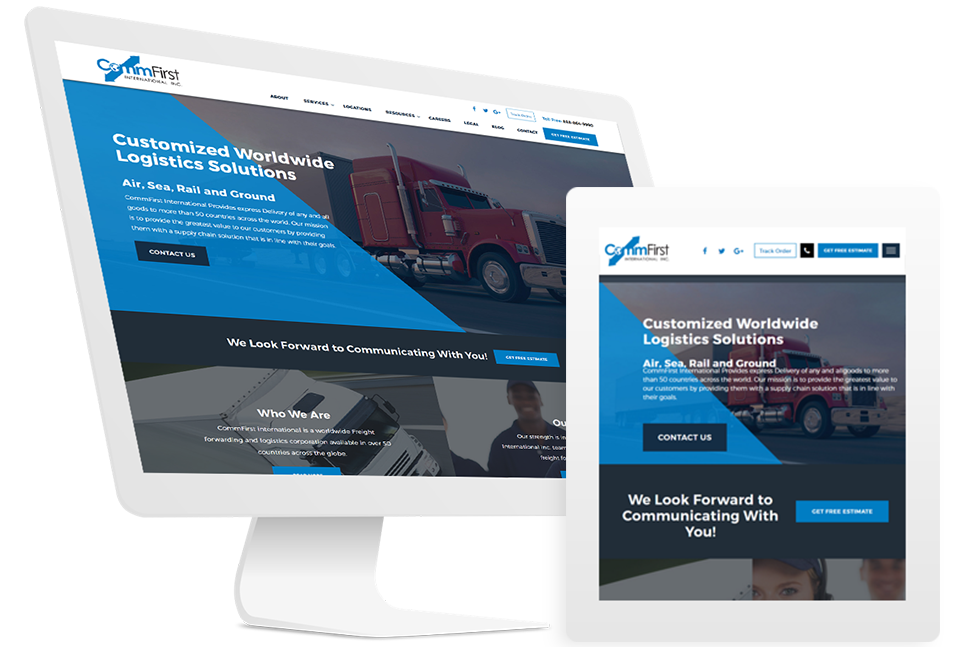Advanced Website Design with Focus on SEO
Leading Tips for Creating an Impactful Internet Site Design That Converts
To accomplish this, one need to think about a variety of variables, including recognizing the target audience, prioritizing user experience, and optimizing for mobile systems. The calculated usage of engaging call-to-actions and a well-defined visual power structure plays a critical role in leading customers through their trip.

Understand Your Target Audience
Understanding your target market is basic to efficient website layout, as it lays the foundation for creating an engaging individual experience. Determining that your customers are, including their demographics, preferences, and habits, allows developers to tailor the web site's web content, design, and performance to meet specific needs.
Carrying out comprehensive market study is vital in this procedure. Surveys, interviews, and analytics can offer beneficial insights into user expectations and discomfort points. By assembling this information, developers can develop user characters that represent various sections of the audience, making certain that layout decisions are educated and appropriate.
In addition, understanding the target market helps in picking appropriate layout components such as color pattern, typography, and imagery that reverberate with users. A web site that talks directly to its target market fosters a sense of connection and count on, motivating longer gos to and greater conversion prices.
Inevitably, a user-centered approach to website layout not only enhances individual fulfillment but also sustains company objectives by driving engagement and commitment. By focusing on the demands and preferences of the target audience, a site can properly offer its function and achieve wanted results.
Prioritize Individual Experience
To enhance the general effectiveness of a website, prioritizing individual experience (UX) is necessary (Website Design). A well-designed UX ensures that site visitors can navigate the website easily, locate info quickly, and engage with material meaningfully. This leads to raised user contentment and greater conversion prices
Begin by executing intuitive navigation. Menus needs to be realistically structured, permitting users to locate vital locations of the site with very little effort. Uniformity in style components, such as color pattern and fonts, fosters knowledge, which is essential for preserving user interaction.
Additionally, take into consideration the packing rate of your web site. A hold-up of just a couple of seconds can lead to significant drop-offs, as customers are much less likely to wait on a slow-loading page. Simplifying photos and enhancing code can boost efficiency and maintain site visitors.
By prioritizing customer experience, you not just produce a much more pleasurable atmosphere for visitors yet likewise strengthen your brand's trustworthiness. Eventually, an emphasis on UX is an investment in the long-lasting success of your web site.
Maximize for Mobile Instruments
Enhancing for mobile phones is vital in today's digital landscape, where an enhancing variety of customers gain access to websites via smart devices and tablet computers. A mobile-friendly design not just enhances customer experience yet also plays a significant role in improving internet search engine rankings. To accomplish this, it is necessary to embrace a responsive layout that instantly gets used to numerous screen dimensions and alignments.

Loading rate is an additional important element; mobile individuals are usually much less client and expect fast accessibility to info. Maximize images and utilize internet browser why not try these out caching to boost performance. Test your web site on several devices and display resolutions to identify and remedy any type of prospective usability problems. By focusing on mobile optimization, you guarantee that your web site continues to be competitive and effectively involves a wider audience.
Use Compelling Call-to-Actions
A web site's effectiveness typically depends upon its capacity to assist site visitors towards wanted actions, making compelling call-to-actions (CTAs) important elements of design. CTAs serve as the critical points that direct individuals to engage with the website, whether that means buying, registering for a newsletter, or downloading and install a source.
To produce reliable CTAs, clearness is vital. Use succinct language that plainly communicates the activity you desire the customer to take. Expressions such as "Obtain Started," "Subscribe Free," or "Store Now" not just convey urgency yet likewise eliminate uncertainty. The positioning of CTAs is just as essential; they should be strategically positioned throughout the webpage to guarantee they are conveniently visible, especially in high-traffic areas.
Additionally, the style of CTAs need to attract attention without being noticeable. Use contrasting colors and clear font styles to ensure they record focus. Furthermore, take into consideration using directional cues, such as arrowheads or photos, to direct users toward these switches. By concentrating on find out these components, services can significantly improve individual interaction, driving conversions and eventually attaining their website's goals.
Focus on Visual Power Structure
Efficient site design counts heavily on a well-structured visual power structure that guides users via web content seamlessly. By arranging aspects in a manner that focuses on information, designers can improve user experience and help with decision-making. This involves using size, shade, comparison, and spacing useful link purposefully to draw focus to one of the most essential components of a website.
Making use of larger typefaces for headings and subheadings develops a clear difference between different sections, allowing individuals to check material easily. In addition, using different shades for switches and calls-to-action can capture user attention and urge interaction. Whitespace is one more important element; it prevents clutter and makes it possible for individuals to concentrate on essential messages without distractions.
Photos and graphics need to enhance the message while also sticking to the well-known pecking order, strengthening the general message (Website Design). Consistency in layout elements, such as color design and typography, more reinforces the aesthetic pecking order, making navigating instinctive
%20%5B60%25%5D.jpg)
Conclusion
In conclusion, effective site design demands an extensive understanding of the target audience, prioritization of user experience, and mobile optimization. Inevitably, a well-executed site layout serves as a crucial element in driving user activities and accomplishing organization goals.